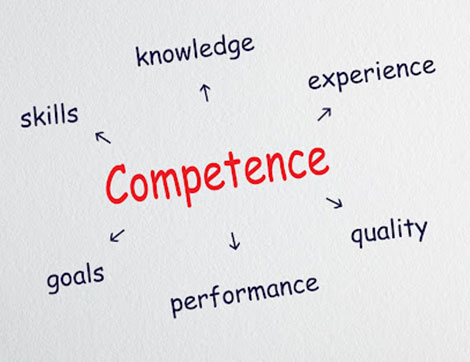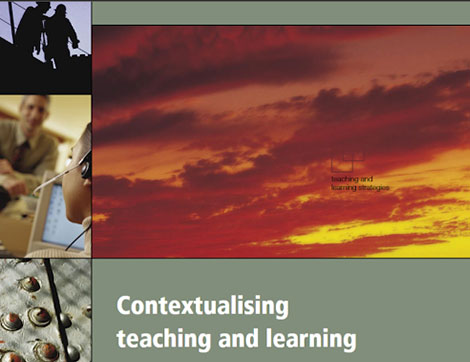After the Australian tripartite mission in 1987 (ACTU/TDC 1987) and the publication of Industry training in Australia: The need for change (Dawkins 1989a) and Improving Australia’s training system, many people believe that this is when CBT was first implemented (Dawkins 1989b). Despite this, CBT can be traced back to more traditional approaches, such as the CBT-based Instructional Systems Model, which is implemented in Victoria as well as in other states and territories.
For more information, please refer to the following links:
Competency and competency-based training: what the literature says
Vocational education and training (VET) providers have long used competency-based assessment (CBA) to support students in achieving desired outcomes. Assessment in Vocational Education and Training, also known as VET, is based on national benchmarks, which are referred to as competency standards, for the occupation or industry in which a person is receiving training. According to the standards of the industry and regulatory body, an outcome of “Competent” in a VET assessment indicates that the candidate has demonstrated specific skills and knowledge required to perform a task or job to a certain industry-expected standard. The student’s ability to perform practical tasks and describe or explain how and why tasks are completed in particular ways is given a lot of weight in the evaluation process under competency-based assessment (CBA).
Why is the competency-based assessment used in the VET sector?
There are several reasons why competency-based assessment is used in the VET sector.
Firstly, it provides a more direct link between what is being taught and the real-world skills that students will need in their future careers.
Secondly, it allows for a more individualised approach to learning, as students can progress at their own pace and focus on the areas that they need to work on the most.
Finally, it gives students a greater sense of ownership over their learning, as they are directly involved in assessing their own progress.
What are the features of competency-based assessment?
There are several key features of competency-based assessment, which include:
- A focus on observable behaviours – in other words, what a candidate can do, rather than what they say they can do;
- An emphasis on performance – assessing how well a candidate performs against a set of defined criteria, rather than simply whether or not they have completed a task;
- A focus on specific skills and knowledge – assessing whether a candidate has the required skills and knowledge for a particular role or task;
- An objective approach – using independent observers to assess a candidate’s performance, rather than relying on the opinion of a single individual;
How can I prepare for a competency-based assessment?
If you are scheduled to take a competency-based assessment, there are some steps you can take to help ensure that you are prepared.
First, familiarise yourself with the format of the assessment and the type of questions that will be asked.
Second, make sure you have a clear understanding of the skills and knowledge that will be assessed.
Finally, practice taking similar assessments under similar conditions to help reduce stress and anxiety on assessment day.
There are many benefits of using CBA in VET, including that it:
- Is aligned with workplace requirements and so provides students with relevant and practical skills that they can use in their future careers
- Assesses students against agreed standards, ensuring fairness and consistency in the assessment process
- Can be tailored to the needs of individual students, providing a flexible and responsive approach to assessment
- Provides clear feedback to students on their progress and areas for improvement
- Encourages students to take responsibility for their own learning and development.
- Provides more accurate and precise information about students’ abilities and achievements, which can help to improve teaching and learning.
- Motivate students to learn more effectively, as they can see the direct link between their efforts and their results.
- Help employers to identify the most competent candidates for jobs and thus promote social mobility.
- Contribute to developing a more qualified workforce, as individuals who have been assessed against well-defined standards are likely to be more competent than those who have not.
CBA is an important tool in VET as it helps to ensure that students are receiving quality training that meets industry standards.
Competency-based assessment can help individuals to progress in their careers, as they can demonstrate their abilities and achievements to potential employers. It can also help to identify training and development needs so that individuals can receive the support they need to improve their skills.
The competency-based assessments (CBA) are based on Competency-based training (CBT).
Competency-based training, also known as CBT, is a method of instruction that places the emphasis on the learner’s capacity to receive, respond to, and process information to attain the desired level of competency. Rather than focusing on a learner’s accomplishment in comparison to that of others, it emphasises the acquisition of skills and the demonstration of those skills to meet standards that have been established by the industry.
Learner progression in a training program based on competencies is not tied to the passage of time. When learners reach the required level of competency, they are allowed to progress to the next level. Learners have the ability to complete the training in their own time and at their own rate when they do it this way.
Training that is based on competencies places an emphasis on learning to solve problems, managing oneself, and growing through experience. It is a process that encourages interaction between the learner, the trainer, and the sector of the economy in which the learner will eventually find employment.
Learners of all ages and skill levels can benefit from the versatility and adaptability of an approach to education known as competency-based training (CBT). Those individuals who may have difficulty learning in a conventional, time-based setting would benefit tremendously from using this method.
As discussed, CBT is a type of training that focuses on teaching people the specific skills and knowledge they need to perform a particular job. CBT is often used in vocational education and training, as it can be adapted to different occupations and levels of experience.
CBT can be delivered in various ways, including classroom-based instruction, online courses, and on-the-job training.
CBT typically includes both theoretical and practical components so that students can learn both the concepts and the skills they need to apply them in the workplace.
While CBT is often used to prepare people for specific jobs, it can also be used to develop general skills and knowledge. For example, CBT can be used to train people in customer service, teamwork, or leadership.
CBT is a flexible and adaptable approach to training, which makes it ideal for vocational education and training. It can be tailored to the specific needs of each individual and can be delivered in various ways.
The competency-based assessments (CBA) can provide a basis for awarding training products, which can lead to greater opportunities for employment and career progression.
It can be concluded that competency-based assessment and competency-based training have several advantages in vocational education and training, thus making them an important tool for improving teaching and learning as well as promoting social mobility and economic growth.











